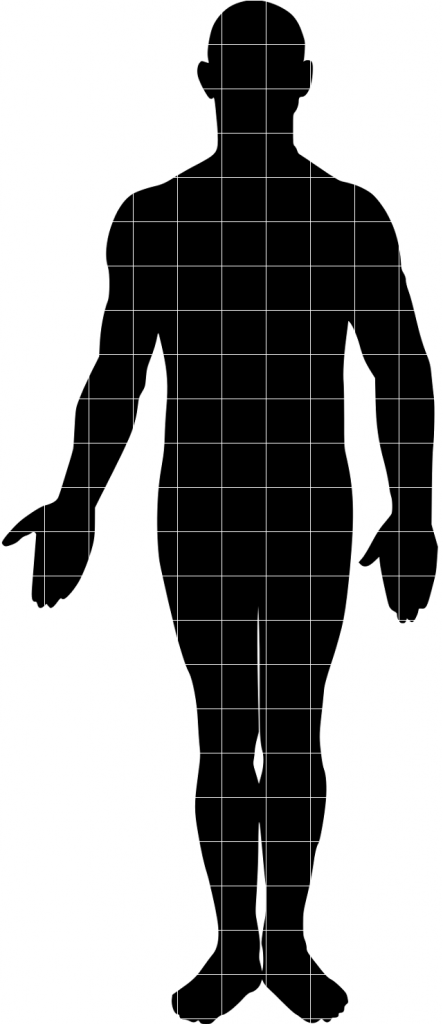
The simple method: -4 to hit and the target gets a saving throw. This method works for producing special effects (e.g. tripping) or targeting large parts of a monster (e.g. hydra head). The more complex method below models the difficulty of hitting very small parts of a human body.
Choose a target and figure what portion of the whole it represents. For example, if you only want to hit any part of the right side, that’s 1/2. If you want to hit the trunk, that’s about 1/3. A hand might be only 3 squares or 1/33. The figure above has about 100 squares, which makes it easy to guess.
Take the denominator (e.g. 2, 3, 33) and prepare to roll that many d20, but take no more than 10d20.
First, roll one d20 to determine a hit, as normal. If it hit, roll the rest of the dice. If every one of them hit, the called shot hits the mark. Otherwise, it’s just a normal hit.
Choose target. What portion of total? Round to power of 2… Half, fourth, eighth… That’s how many d20s to roll. Roll one d20 first. A hit is a hit somewhere. Roll the rest. If all hit, called shot works.
Example: a first level fighter shooting at AC 13, assuming only the class AB +1, hits 12 in 20. He wants to hit the right arm. That’s about 13/100 or 1/8. He rolls a 15 on d20, scoring a hit. Next, he rolls 7d20. The chance of rolling 7 dice all at 12 or better is about 3%.
Example: a 10th level fighter wants to shoot a knife from a peasant’s hand. That’s 1/100 shot but dice max at 10. His initial roll isn’t a 1 so it hits. Next, he rolls 9 more dice. The chance of rolling a no 1s on 9d20 is 63%.
